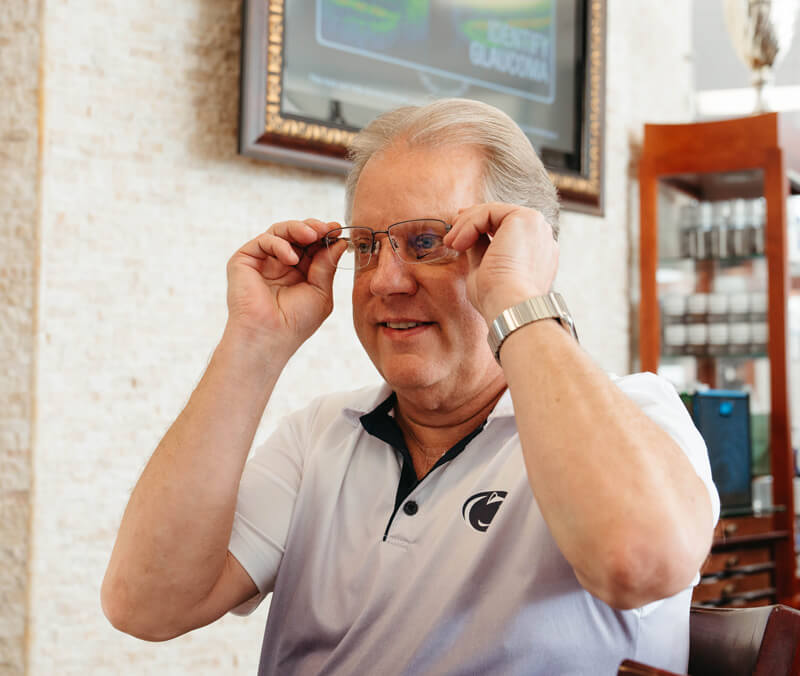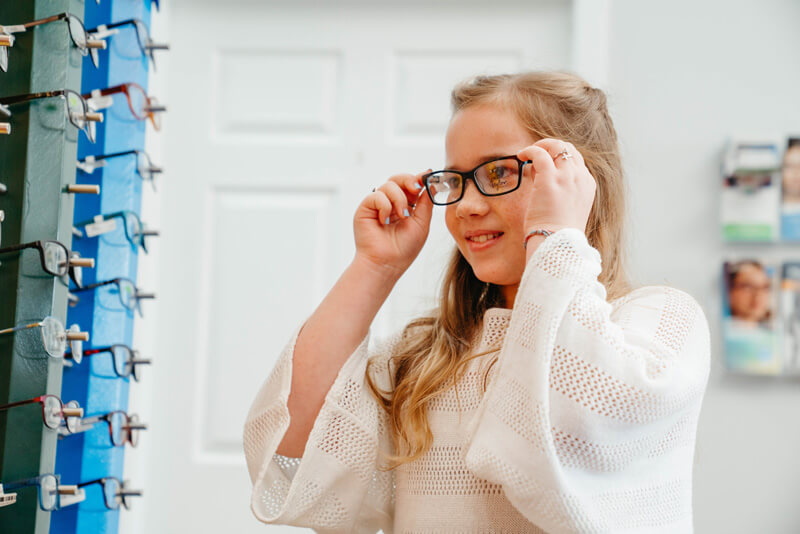Nearsightedness

Nearsightedness Treatment at True Eye Experts
If you can see long distances just fine but close-up objects have you squinting and straining your eyes, you probably suffer from a very common refractive error known as nearsightedness, also called myopia. This kind of difficulty, which is typically caused by an abnormality in the shape of the eye, can make reading, writing or other close work difficult and unpleasant. Fortunately, True Eye Experts has diagnosed and treated countless cases of myopia, and our eye doctor can make sure you get the right form of vision correction for your particular needs.

What Causes Nearsightedness?
Perfect or “20/20” vision requires accurate refraction of incoming light, which creates a sharp, clear retinal image ready for processing by the brain. The spherical shape of the normal eye, plus the transparent half-sphere of the cornea at the front of the eye, ensure that the light waves extend the proper distance to the back of the eye for normal vision. If the dimensions are even slightly off, the light waves will either extend too far or not far enough. If the eyeball is too short and/or the cornea too flat, the result is farsightedness (hyperopia). But if the eyeball is too long and/or the corneal curve too deep, the result will be nearsightedness.
Nearly one-third of all Americans suffer from nearsightedness. The condition generally becomes noticeable during childhood vision testing (which is one reason these tests are so important from an early age), and if left untreated it can make schoolwork unnecessarily hard, promoting eye strain and headaches. The condition may progress well into adulthood and then stabilize, at least temporarily.
How is Nearsightedness Treated?
Considering how commonplace nearsightedness is, it’s a good thing that the condition can be corrected so successfully. The first essential step, however, is identifying the nature and degree of myopia. Our Florida eye doctors urge parents to get their children tested for refractive errors from around the age of 3 (when the child is old enough to interact with us by describing visual perceptions). As the condition continues to progress, annual eye exams are a good idea so we can provide an up-to-date prescription for vision correction.
Correction of nearsightedness can take the form of corrective lenses or eye surgery. Eyeglasses are the simplest way to get those close-up images into focus. Contact lenses are highly effective as well, but they require some additional testing, preparations, and fitting. Ortho-K is an exciting option for people who don’t like wearing corrective lenses during the day. These special contacts reshape your corneas overnight, during sleep, and the resulting visual clarity can last for days. If you decide on corrective surgery such as LASIK, we can make sure you’re a good candidate, write the necessary prescription, and perform follow-up exams to track your recovery. So stop squinting and schedule an appointment with True Eye Experts!

Learn More About Nearsightedness Treatment at True Eye Experts
Nearsightedness is a common concern, but at True Eye Experts, we’ll monitor the progression of myopia and provide you with the solutions you need to live your life with clear vision. To learn more about nearsightedness, call one of our locations or schedule an appointment online to learn more.
